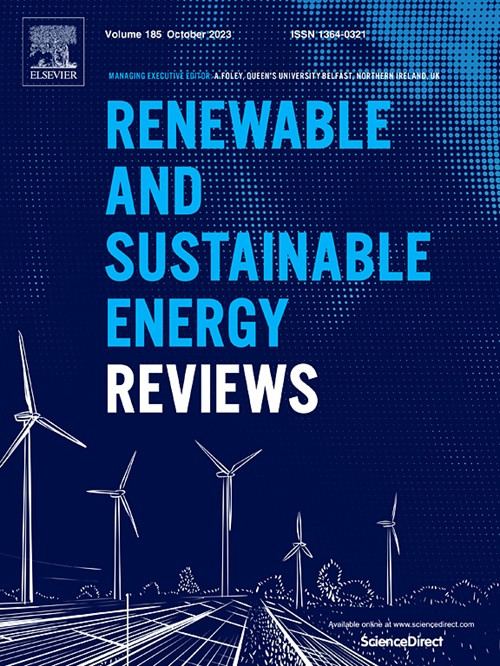作物加工副产物利用链中温室气体排放及其减排潜力——柑橘和甘蔗副产物研究综述
IF 16.3
1区 工程技术
Q1 ENERGY & FUELS
引用次数: 0
摘要
全球人口的不断增长给粮食生产系统带来了挑战,这些挑战超出了社会经济因素,还包括与气候有关的紧急破坏。农业食品部门是温室气体(GHG)排放的最大来源之一,因此迫切需要采取符合可持续发展目标的可持续做法。来自食品供应链的作物加工副产品(cpbp)为减少环境影响,同时产生社会和经济效益提供了一种有希望的方法。这篇综述探讨了甘蔗和柑橘加工副产品的合理利用途径,以减少温室气体排放,这两种作物是全球产量最大但利用不足的作物。传统和新兴管理实践的综合比较表明,针对食品、化学品和能源的创新CPBP利用链提供了实质性的环境优势。具体来说,生物转化过程,如沼气和生物乙醇生产的发酵和厌氧消化,其排放量明显低于化学转化方法。此外,综合生物炼制系统的新兴发展显示了cpbp低排放利用的巨大潜力。这些发现强调了继续研究循环生物经济框架和标准化环境评估协议的必要性,以优化CPBP的价值,并为全球可持续性目标做出贡献。本文章由计算机程序翻译,如有差异,请以英文原文为准。
Greenhouse gas emissions and reduction potentials in the crop processing by-products utilization chains: A review on citrus and sugarcane by-products
The expanding global population presents challenges for food production systems that extend beyond socio-economic considerations to encompass urgent climate-related disruptions. The agri-food sector is one of the largest contributors to greenhouse gas (GHG) emissions, emphasizing the critical need for sustainable practices aligned with Sustainable Development Goals. Crop processing by-products (CPBPs) from the food supply chain offer a promising approach for reducing environmental impact while generating social and economic benefits. This review examines the rational utilization pathways for sugarcane and citrus processing by-products, two of the most produced and underutilized crops globally, to mitigate GHG emissions. A comprehensive comparison of traditional and emerging management practices reveals that innovative CPBP utilization chains targeting food, chemicals, and energy provide substantial environmental advantages. Specifically, bioconversion processes, such as fermentation and anaerobic digestion for biogas and bioethanol production, exhibit notably lower emissions than chemical conversion methods. Moreover, the emerging development of integrated biorefinery systems demonstrates significant potential for low-emission utilization of CPBPs. These findings highlight the need for continued research into circular bioeconomy frameworks and standardized environmental assessment protocols to optimize CPBP valorization and contribute to global sustainability goals.
求助全文
通过发布文献求助,成功后即可免费获取论文全文。
去求助
来源期刊

Renewable and Sustainable Energy Reviews
工程技术-能源与燃料
CiteScore
31.20
自引率
5.70%
发文量
1055
审稿时长
62 days
期刊介绍:
The mission of Renewable and Sustainable Energy Reviews is to disseminate the most compelling and pertinent critical insights in renewable and sustainable energy, fostering collaboration among the research community, private sector, and policy and decision makers. The journal aims to exchange challenges, solutions, innovative concepts, and technologies, contributing to sustainable development, the transition to a low-carbon future, and the attainment of emissions targets outlined by the United Nations Framework Convention on Climate Change.
Renewable and Sustainable Energy Reviews publishes a diverse range of content, including review papers, original research, case studies, and analyses of new technologies, all featuring a substantial review component such as critique, comparison, or analysis. Introducing a distinctive paper type, Expert Insights, the journal presents commissioned mini-reviews authored by field leaders, addressing topics of significant interest. Case studies undergo consideration only if they showcase the work's applicability to other regions or contribute valuable insights to the broader field of renewable and sustainable energy. Notably, a bibliographic or literature review lacking critical analysis is deemed unsuitable for publication.
 求助内容:
求助内容: 应助结果提醒方式:
应助结果提醒方式:


